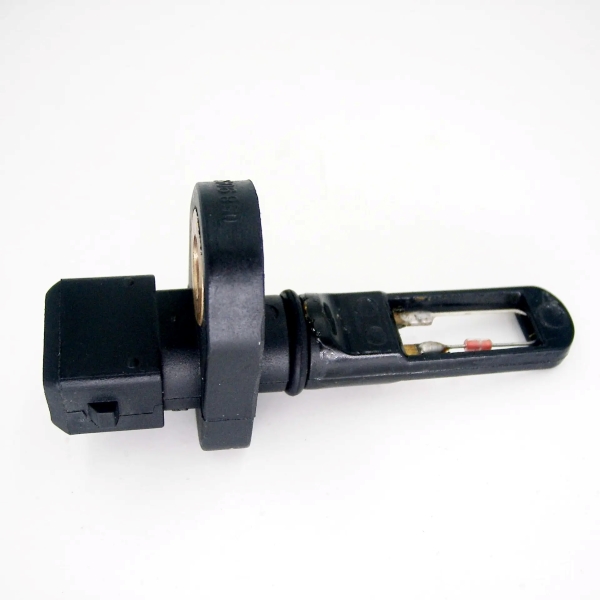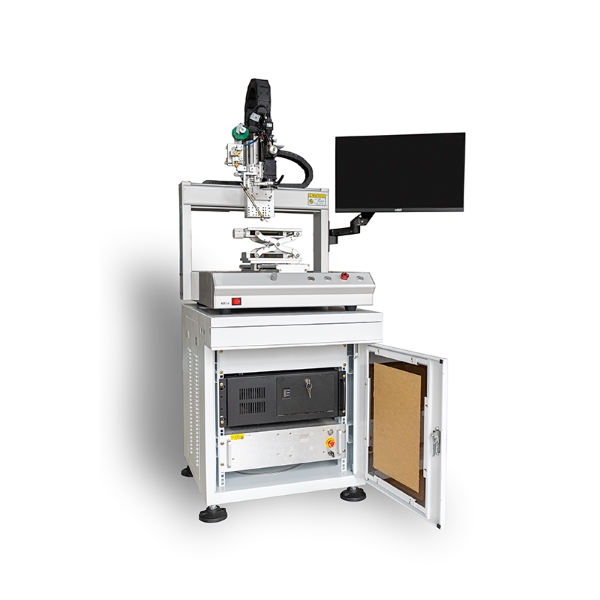Engine sensors are indispensable components of modern automobiles, which are mainly divided into crankshaft position sensors and camshaft position sensors according to their positions, and electromagnetic sensors, Hall effect sensors and photoelectric effect sensors according to the applied technology.

An engine temperature sensor is a crucial component in the modern automotive industry. It is able to monitor the temperature changes of the engine in real time to ensure the normal operation and efficient performance of the engine. The laser soldering process plays an indispensable role in the manufacture of engine temperature sensors.
Laser soldering technology uses a laser as a heat source to precisely control and rapidly heat a low melting point solder, which melts and flows into and fills the tiny gaps between the metal parts to be soldered, forming a strong soldered joint. This non-contact processing method does not require physical contact, reducing the thermal impact on the component body and ensuring consistent and highly reliable solder quality. The application of laser soldering process in automotive engine temperature sensors mainly reflects the need for precision soldering in the sensor manufacturing process. Automotive engine temperature sensors, such as intake air temperature sensors and coolant temperature sensors, are critical to the proper functioning of the engine. They are responsible for monitoring the temperatures in different parts of the engine to ensure that the engine operates within the appropriate temperature range to optimise performance and prevent overheating damage.
For the manufacture of engine temperature sensors, the laser soldering process offers several important advantages.
Firstly, laser soldering enables high precision control of the sensor's solder joints. Weld points on sensors need to be tightly connected to other components to ensure the stability and sensitivity of the sensor. The high precision of laser soldering ensures the precise position and shape of the solder joints, thus improving the reliability and performance of the sensor.
Secondly, laser soldering enables fast control of the soldering process. The manufacture of sensors requires fast and stable welding speeds to increase productivity. Laser soldering, as an efficient soldering method, meets this need and maintains the stability of the soldering process, ensuring high quality sensor production.
In addition, the laser soldering process reduces the formation of heat-affected zones during the soldering process. Sensor welding needs to be carried out in a small size space, the formation of heat-affected zone is easy to cause damage to the surrounding components. The laser soldering process produces less heat and a smaller heat affected zone, reducing damage to surrounding components and improving the service life and reliability of the sensor.

Advantages of Matson's thermostatic laser soldering system for temperature sensors:
1. Higher laser processing accuracy, spot diameter of 0.1mm minimum, can achieve the welding of micro-pitch mounting devices;
2. Short time local heating, minimal thermal impact on the substrate and peripheral components, according to the type of component leads to implement different heating specifications to obtain consistent soldering quality.
3. No iron consumption, no need to replace the heater, to achieve high efficiency continuous operation.
4. High precision laser processing, laser spot can reach the micron level, processing time / power programme control, can be in the space of less than 1mm for welding.
5. CCD positioning, what you see is what you get, without the need to repeatedly correct the visual positioning.
6. Non-contact processing, there is no contact welding caused by the stress, no static electricity.
7. Laser for green energy, the cleanest processing, no consumables, simple maintenance, easy to operate.
8. Proprietary technology: laser, imaging, temperature measurement, red multi-light co-axial
In summary, the laser soldering process plays a key role in the production of automotive engine temperature sensors, which not only improves the quality of soldering and production efficiency, but also ensures the long-term stability of the sensor and the safe operation of the vehicle.
Contact: Mr.Xiao
Phone: +86-13385280662
E-mail: market001@whlaser.cn
Add: Room 02, Floor 5, Building 9, Gezhouba Sun City, No. 40, Gaoxin 4th Road, Donghu New Technology Development Zone, Wuhan